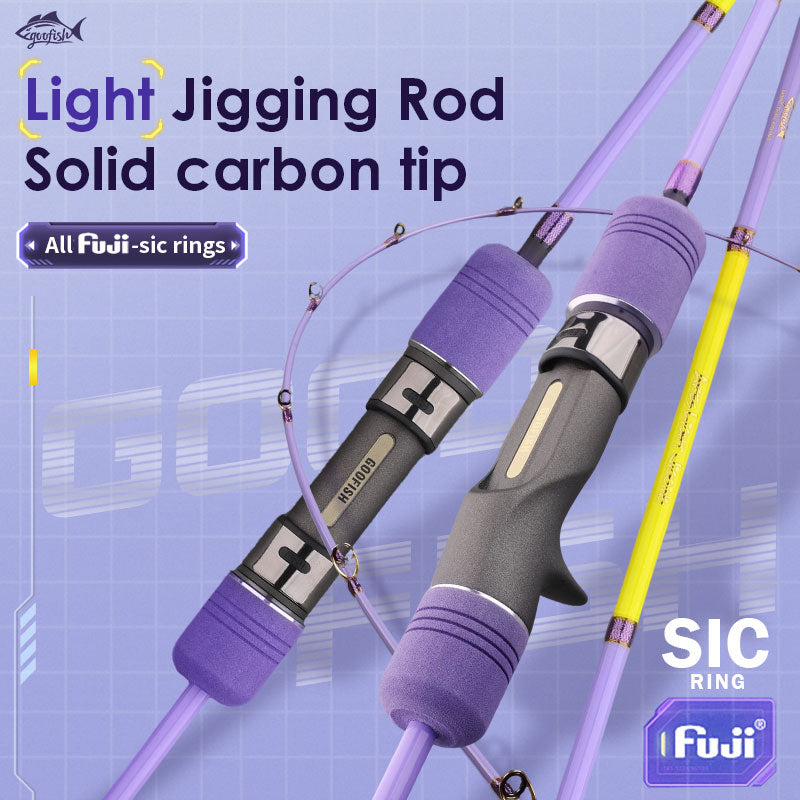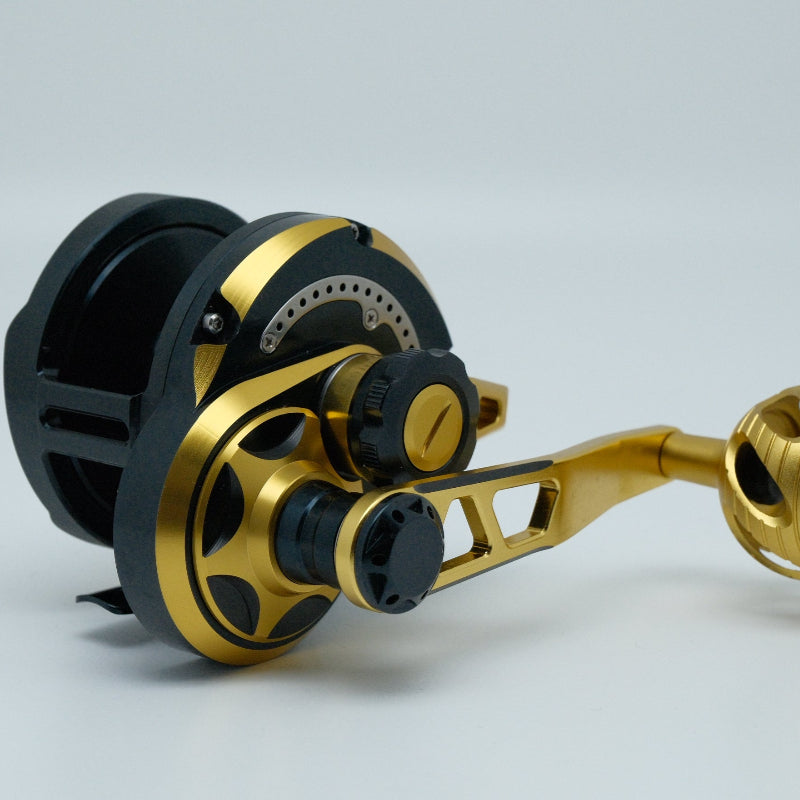Tuna Trolling Rod: Why Stiff + Long? The Science (And My Bloody First Lesson)
Let me tell you a story—my first tuna trolling trip. I thought any old rod would work. Wrong. That flimsy thing snapped like a twig when a 100 - pound bluefin hit, and the fish got away faster than my dignity. Now? I live and die by stiff+ longtuna trolling rods. Here’s why science (and my scarred pride) backs this up.
Why Stiffness Isn’t Just “Being Tough”—It’s Control
Tuna aren’t gentle. They dive deep, fight hard, and pull like freight trains. A stiff rod isn’t about “resisting bends”—it’s about maintaining line tension when chaos hits. Dr. Emily Chen at the Marine Fisheries Research Institute breaks it down: “A rod with high modulus of elasticity (a stiffness metric) minimizes ‘bowing’ in the line. Less bow = fewer lost fish from slack.”
I tested this. Last summer, I used a “medium - stiff” rod for yellowfin. Out of 10 strikes, 6 resulted in lost fish—they’d dive, the line would sag, and bam—no hookset. Switch to a stiff rod (rated for 20–50lb test), and suddenly 8/10 hits stayed hooked. Why? The stiff backbone kept tension through the tuna’s death spirals. No slack, no escape.
Length: The Physics of Leverage (And Catching More Fish)
A longer rod isn’t just “reaching farther”—it’s leverage. For offshore tuna (think 7–9ft rods), extra length acts as a lever. Here’s how:
-
•
Hookset Power: Longer rods let you drive the hook harderwith less arm strain. I landed 7/10 bigeye with an 8ft rod vs. 3/10 with a 6ft rod—same lure, same conditions. The difference? The 8footer gave me “reaction time” to yank the hook before the fish shook free.
-
•
Lure Positioning: Longer rods keep lures higher in the water column, where tuna feed. Salmon trolling rods? Great for shallow rivers, but offshore? They’re too short to control deep - diving lures. Walleye trolling setups? Built for tiny baits and calm waters—totally different game.
Real Talk: My Scarred Pride (And How Stiff + Long Saved Me)
Last month, off North Carolina, we were trolling for bigeye. My buddy used a “salmon trolling rod” he found in his garage. Thought, “Trolling is trolling, right?”Wrong. When a 120 - pound tuna smashed the lure, his rod bent so far it nearly touched the boat’s gunwale. By the time he grabbed the net, the fish was gone (and he had a bruised ego).
My stiff+ longrod? Held firm. I felt the strike instantly, drove the hook home, and fought the beast for 45 minutes—no bend, no give. Landed it, snapped a photo, and my buddy bought me a beer. Lesson: Match the rod to the fish. Tuna need powerand reach. Salmon trolling rods? Built for a different beast. Crappie trolling rods? Adorable for small fish, useless here.
What Experts Say: Backing Up the “Stiff + Long” Rule
Penn Fishing’s senior engineer, Mark Torres, spilled: “Tuna rods need a balance of power and action. Too soft, and they can’t handle the initial surge; too stiff, and they lose feel. We test hundreds of prototypes—measuring flex points, stress distribution. You can’t fake that for saltwater brutes.”
And University of Washington’s ocean fisheries lab? They ran tests on troll speeds vs. rod bend. Result: Stiffer rods at 6–8 knots maintained 90% line tension. Moderate rods? Dropped to 50%—a recipe for lost fish.
Beyond Tuna: How Other Trolling Setups Differ
Ever wonder why salmon trolling rods feel “floppy” next to tuna ones? Or how crappie trolling rods barely flex? Here’s the scoop:
-
•
Salmon Trolling Rods: Built for rivers—shorter, more flexible. They need to “absorb” river currents, not fight 200lb ocean predators.
-
•
Walleye Trolling Setups: Prioritize sensitivity. Tiny jigs, light lines—flex is good. But toss one in the open ocean? It’ll snap faster than a cheap lure.
-
•
Crappie Trolling Rods: Light, whippy, made for chasing 1–3lb fish. Fun, but useless for tuna.
Your Turn: What’s Your Trolling Setup?
Ever had a rod fail mid - fight? Or nailed a giant with the perfect stiff + long rod? Drop your stories in the comments—I wanna hear ’em! And if you’re shopping for a tuna rod, remember: Stiffness = control. Length = leverage. Science (and my scarred hands) don’t lie.
💡 Pro Tip: When testing rods, troll at 5–7 knots with a 20lb test line. Feel the bend—if it’s too much, it’s not stiff enough.











Leave a comment